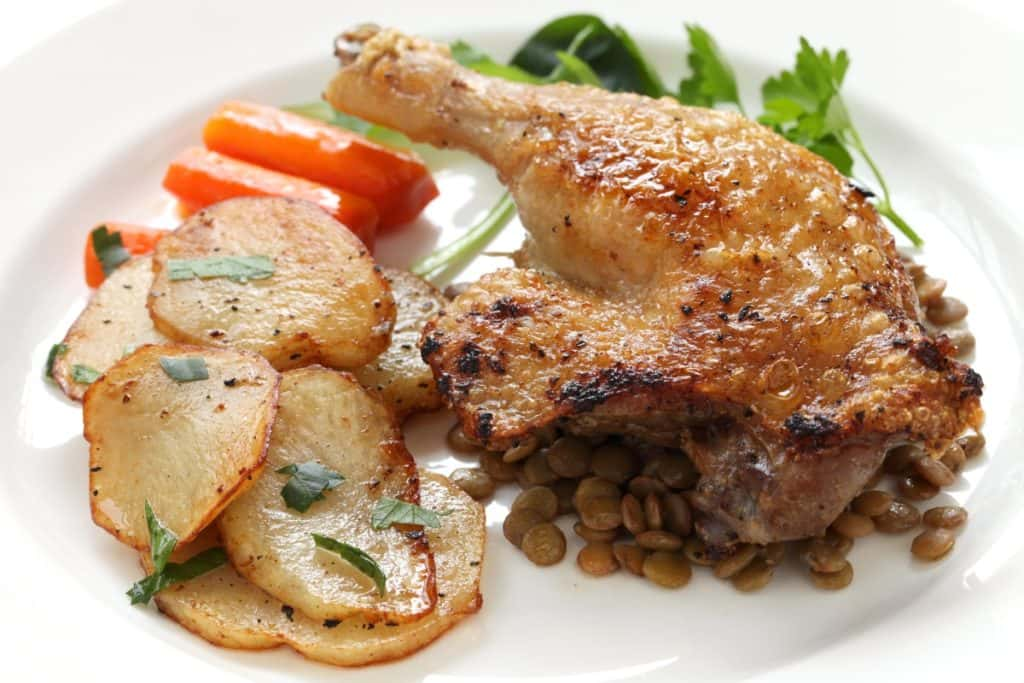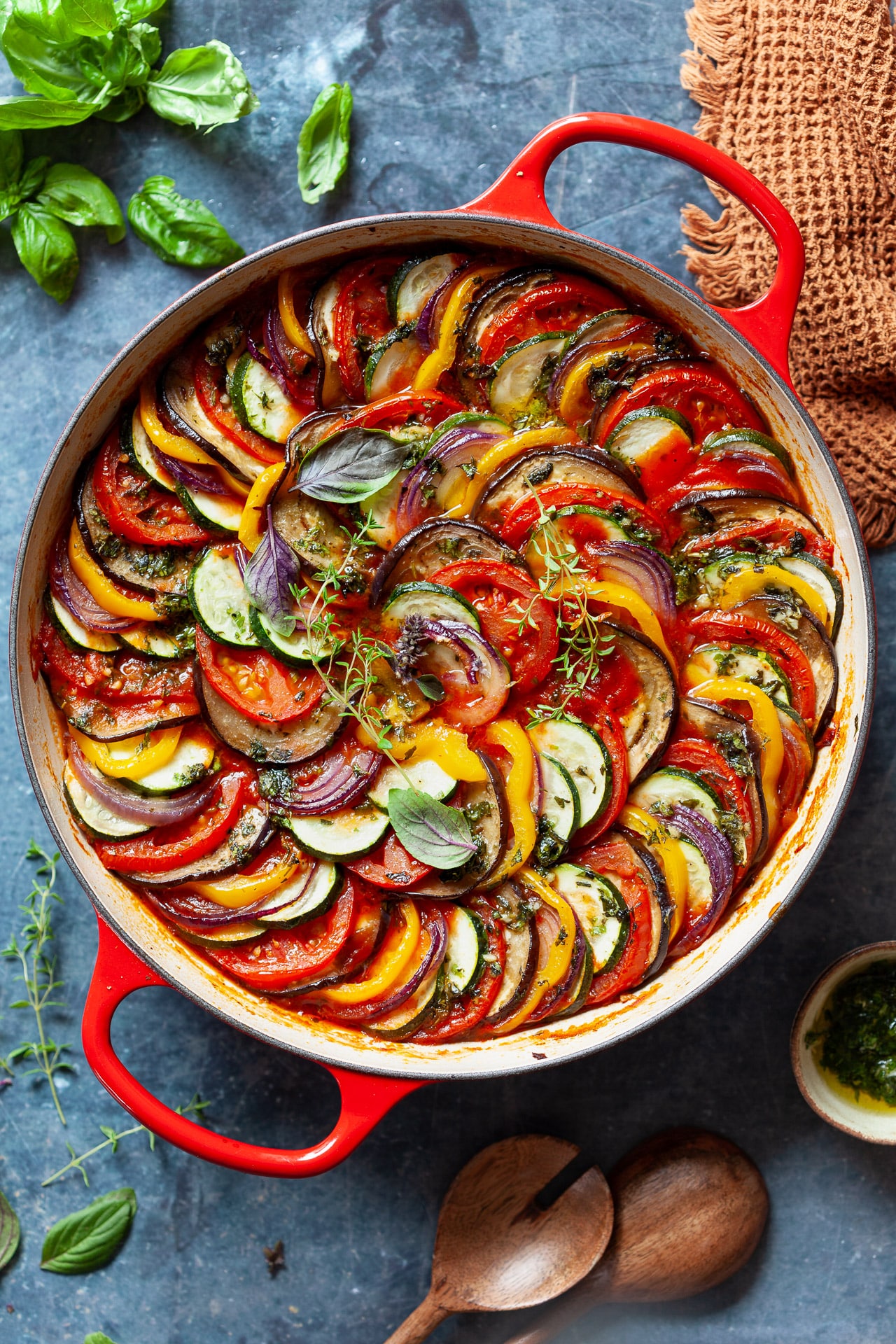A Deep Dive into Duck Confit: From Traditional French Roots to Modern Culinary Explorations
Related Articles
- A Culinary Journey: Exploring The World Of Ratatouille (French)
- Paella: A Spanish Symphony Of Flavors
- A Journey Through Flavor: Exploring The Allure Of Salmon Teriyaki
- A Journey Into The Flavorful World Of Curry Laksa (Malaysia): A Comprehensive Guide
- A Journey Through The World Of Pad Thai: From Humble Beginnings To Culinary Masterpiece
Introduction
Discover everything you need to know about A Deep Dive into Duck Confit: From Traditional French Roots to Modern Culinary Explorations
A Deep Dive into Duck Confit: From Traditional French Roots to Modern Culinary Explorations

Duck confit, a culinary masterpiece born from the French countryside, embodies the essence of slow cooking and mindful preparation. This dish, a testament to the art of preserving and enhancing flavors, has captivated palates for centuries. It’s more than just a recipe; it’s a journey into the heart of French culinary traditions and a testament to the power of simplicity in achieving culinary excellence.
The Art of Confit: A Historical Perspective
The term "confit" originates from the Latin word "confectus," meaning "preserved." This aptly describes the process at its core: slow cooking in its own fat, a method that not only preserves the duck but also imbues it with a rich, savory depth.
This technique, born out of necessity, dates back to medieval times. In an era before refrigeration, confit provided a way to preserve meat for extended periods, ensuring a steady supply of protein throughout the year. The use of duck, with its naturally high fat content, proved particularly suitable for this purpose.
Over time, confit evolved from a mere preservation method into a culinary art form. The French, renowned for their appreciation of fine dining, elevated duck confit to a cherished delicacy. This shift was fueled by the realization that the slow cooking process not only preserved the duck but also infused it with an unparalleled tenderness and depth of flavor.
Understanding the Essence of Duck Confit
Duck confit is essentially a slow-cooked duck leg, submerged in its own rendered fat. This process, which can take anywhere from 3 to 6 hours, breaks down the connective tissues, resulting in a meltingly tender meat. The rendered fat, rich in flavor and aromatic compounds, permeates the duck, adding an intense depth to its taste.
The beauty of duck confit lies in its simplicity. The only essential ingredients are the duck legs and salt. However, traditional recipes often include herbs like thyme and bay leaf, adding subtle nuances to the flavor profile.
Deconstructing the Technique: A Step-by-Step Guide
The magic of duck confit lies in its meticulous preparation. Here’s a detailed breakdown of the process, ensuring success even for novice cooks:

1. Preparation:
- Selecting the Duck: Opt for fresh, high-quality duck legs. The skin should be smooth and plump, indicating a healthy and flavorful bird.
- Salting: Liberally salt the duck legs, ensuring the salt covers the entire surface. This step, crucial for preserving the meat, also draws out excess moisture, promoting better browning during cooking.
- Refrigeration: Refrigerate the salted duck legs for at least 12 hours, preferably overnight. This allows the salt to penetrate the meat, enhancing its flavor and texture.
- Rinsing: After refrigeration, rinse the duck legs thoroughly to remove any excess salt.
2. Rendering the Fat:
- Heat the Duck Fat: Place the duck legs in a heavy-bottomed pot or Dutch oven. Add enough duck fat or other cooking fat (like goose fat or olive oil) to cover the legs completely.
- Slow Simmer: Bring the fat to a gentle simmer over low heat. Avoid boiling the fat, as this can lead to tough meat and a less flavorful result.
- Skimming: As the fat renders, skim off any foam or impurities that rise to the surface. This ensures a clear, flavorful fat for cooking.
- Cook Time: Simmer the duck legs for 3 to 6 hours, depending on their size and desired tenderness.

3. Cooling and Storage:
- Cool the Duck: Once cooked, carefully remove the duck legs from the pot and allow them to cool slightly.
- Store the Fat: Strain the rendered duck fat through a fine-mesh sieve into a clean container. This fat can be used for future confit preparations, roasting, or even as a flavorful base for sauces.
- Store the Duck: Once cooled, store the duck legs in the rendered fat in a cool, dark place. This method of storage keeps the duck moist and flavorful for weeks.
Beyond the Basics: Culinary Innovations
While traditional duck confit holds a special place in culinary history, the beauty of this technique lies in its versatility. It can be adapted to create a myriad of dishes, catering to various tastes and preferences.
1. Flavor Variations:
- Herbs and Spices: Experiment with different herbs and spices, such as rosemary, sage, garlic, peppercorns, or even citrus zest, to infuse the duck with unique aromatic profiles.
- Wine and Vinegar: Adding a splash of white wine or apple cider vinegar during the cooking process can add a subtle tanginess and enhance the overall flavor complexity.
- Fruits: Incorporating dried fruits like prunes or apricots adds a touch of sweetness and a contrasting texture to the dish.
2. Cooking Methods:
- Braising: While traditional confit involves slow cooking in fat, you can also braise the duck legs in a flavorful broth for a more moist and tender result.
- Roasting: Roasting confit duck legs in the oven can achieve a crispy skin while retaining their succulent texture.
- Pan-Frying: Pan-frying confit duck legs for a short time can create a delicious crispy exterior while maintaining their tender interior.
3. Serving Suggestions:
- Classic Confit: Enjoy the duck legs as they are, served with a simple salad or roasted vegetables.
- Duck Confit Hash: Dice the duck legs and combine them with potatoes, onions, and herbs for a hearty and flavorful hash.
- Duck Confit Pizza: Top your favorite pizza crust with confit duck legs, caramelized onions, and a sprinkle of goat cheese for a gourmet pizza experience.
- Duck Confit Salad: Combine shredded duck confit with mixed greens, walnuts, dried cranberries, and a balsamic vinaigrette for a light and flavorful salad.
- Duck Confit Tacos: Use shredded duck confit as a filling for tacos, topped with your favorite salsa, guacamole, and cilantro.
Culinary Tips for Success
- Temperature Control: Maintain a gentle simmer during the cooking process. Overheating can lead to tough meat and a less flavorful result.
- Skimming: Regularly skim off any foam or impurities that rise to the surface of the fat. This ensures a clear, flavorful fat for cooking and storage.
- Bone-in vs. Boneless: Both bone-in and boneless duck legs can be used for confit. Bone-in legs offer a richer flavor and better texture, while boneless legs provide a more convenient option for slicing and serving.
- Storage: Store the cooked duck legs in the rendered fat in a cool, dark place. This method of storage keeps the duck moist and flavorful for weeks.
- Reheating: Gently reheat the duck legs in the oven or over low heat to avoid drying them out.
Conclusion: Embracing the Legacy of Duck Confit
Duck confit, a testament to the artistry of slow cooking and mindful preservation, offers a journey through culinary history and a celebration of French culinary traditions. This dish, with its rich history and versatility, transcends the boundaries of a simple recipe. It invites experimentation, encourages creativity, and ultimately rewards the cook with a culinary masterpiece that delights both the palate and the soul.
By understanding the essence of confit, mastering the techniques, and embracing the possibilities for culinary innovation, you can transform this classic French dish into a culinary adventure that reflects your own unique style and preferences. So, step into the kitchen, embrace the magic of slow cooking, and discover the enduring legacy of duck confit.
Closure
Thank you for reading! Stay with us for more insights on A Deep Dive into Duck Confit: From Traditional French Roots to Modern Culinary Explorations.
Make sure to follow us for more exciting news and reviews.
We’d love to hear your thoughts about A Deep Dive into Duck Confit: From Traditional French Roots to Modern Culinary Explorations—leave your comments below!
Stay informed with our next updates on A Deep Dive into Duck Confit: From Traditional French Roots to Modern Culinary Explorations and other exciting topics.





